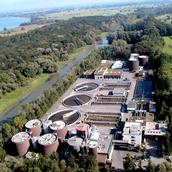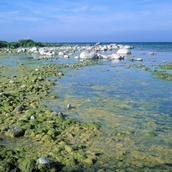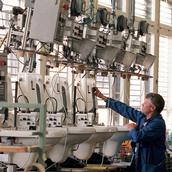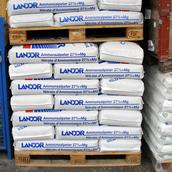Introduction
|
Text "Introduction" (pdf, 552 KB) |
Research background
In Novaquatis, we studied whether, in what form and in what circumstances the NoMix technology is a viable option. As a wide range of questions are involved, the projects were organized into work packages reflecting the stages of a possible nutrient cycle.
An overview is given here, and further details can be found in
the individual Novaquatis publications.
Results and synthesis
Gratifyingly, the NoMix technology meets with a high level of approval among the public. All the people surveyed in Novaquatis were familiar with and had used the still-immature technology. Although they recognized the drawbacks of today’s NoMix toilets, the overwhelming majority found the basic idea convincing (Nova 1). Practitioners also show considerable interest: in Canton Basel-Landschaft, for example, large-scale pilot projects were successfully conducted (Nova PP). With regard to conservation of resources, the NoMix technology also performs well: it has the potential to make a major contribution to water pollution control in an energy-efficient manner. In addition, in areas of nutrient scarcity, urine represents a local nutrient resource (Nova 7).
The difficulties are in the detail, and urine transport proved to be the most problematic point. Installing new pipes or transporting urine by tanker from basement storage tanks for centralized treatment would be a complex and costly undertaking. In Novaquatis, we elaborated low-cost solutions for transporting urine via the existing sewer system (Nova 3). However, despite their potential, they failed to convince the project partners from the sanitary technology industry. These approaches are too closely tailored to Swiss conditions and are also only suitable for relatively small catchment areas. The sanitary industry therefore considers the market potential to be too low to justify investments in the NoMix technology (Nova 2). Improved sanitary technology is, however, indispensable; although pilot projects can be carried out with today's NoMix toilets – larger-scale demonstration projects are not feasible (Nova PP). The objections raised by the sanitary industry will thus have a decisive influence on future developments.
At the same time, literature studies (Nova 7) indicated the huge potential of the NoMix technology from a global perspective. Coastal waters in particular are severely threatened by nutrient overload. As a result of explosive population growth in these regions, the problems associated with nutrients from wastewater are becoming increasingly prominent on the global agenda. Greater elimination of nutrients is required – which is at present being carried out almost exclusively in industrialized countries. In areas currently lacking a fully developed infrastructure, the NoMix technology can protect water resources more rapidly and effectively than the expansion of sewers and treatment plants. The potential of the NoMix technology in cases where acute population pressures give rise to intractable water pollution control problems was impressively demonstrated by the example of China (Nova 8).
Ultimately, the key issues are cost-effectiveness and the technical and organizational possibilities of urine source separation. If urine could be readily transported, centralized urine treatment would be the option of choice. Methods already exist (Nova 4), and processes such as phosphorus precipitation and biological nitrogen elimination can be applied much more cheaply and energy-efficiently to concentrated urine than to wastewater. Great potential also attaches to methods for the recovery of nitrogen and elimination of micropollutants – pharmaceuticals and hormones excreted by humans and detectable in waterbodies. Urine in wastewater accounts for an estimated 50% of the ecotoxicological hazard posed by these substances (Nova 5).
Given the difficulties and/or cost of transport, the potential and cost-effectiveness of decentralized processes need to be considered. Urine treatment on site appears to be an attractive option. However, it was not possible within the Novaquatis project to study decentralized processes in detail. Here, too, the combination of phosphorus precipitation and biological nitrogen elimination would certainly be a promising approach. We are confident that mass production could make decentralized processes economically attractive for the sanitary and other industries. More problematic, in our view, is the stability of decentralized technologies and the level of maintenance required, especially in the case of biological processes. To facilitate the adoption of the NoMix technology, the two types of solution could be pursued in parallel. In view of Eawag's scientific expertise, we are better qualified to develop stable biological processes and solutions for the organizational problems of decentralized treatment than to identify new options for urine transport.
References
Larsen, T.A., W. Gujer (1996) Separate management of anthropogenic nutrient solutions (human urine). Water Science and Technology 34(3–4): 87–94.
Larsen, T.A., W. Gujer (1997) The concept of sustainable urban water management. Water Science and Technology 35(9): 3–10.
Larsen, T.A., I. Peters, A. Alder, R. Eggen, M. Maurer, J. Muncke (2001) Re-engineering the toilet for sustainable wastewater management. Environmental Science & Technology 35(9): 192A–197A.
Larsen, T.A., M. Maurer, K.M. Udert, J. Lienert (submitted) Nutrient cycles and resource management: Implications for the choice of wastewater treatment technology. Accepted for presentation at IWA Advanced Sanitation Conference, Aachen, 12.–13.3.2007, submitted to Water Science and Technology.
Wilsenach, J.A., M. Maurer, T.A. Larsen, M.C.M. van Loosdrecht (2003) From waste treatment to integrated resource management. Water Science and Technology 48(1): 1–9.






